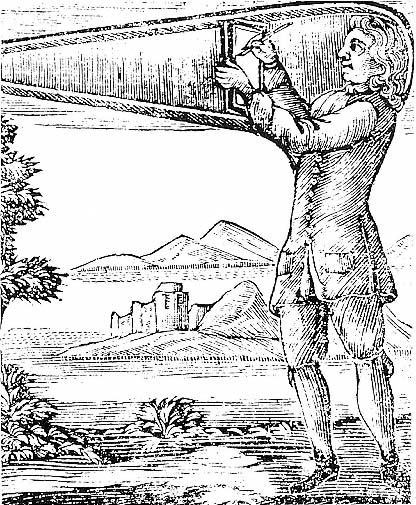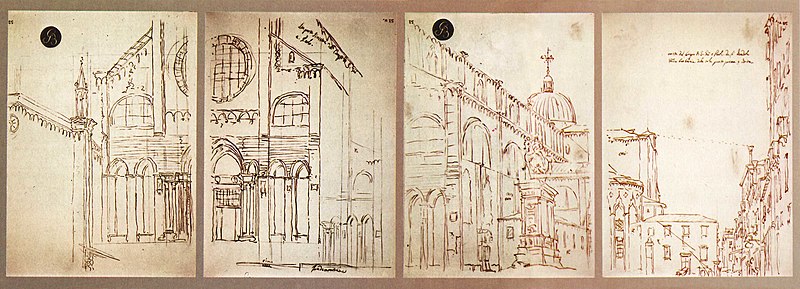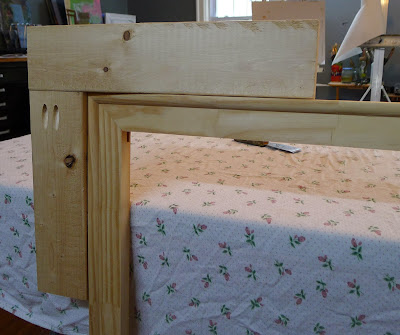 |
| Start, as you always do, by squaring off the stretchers. Use a mallet to get them true and check all four corners. |
Last month I was building the large canvases for my spring show when Jane Bartlett stopped by. “Any bimbo can build a small canvas of cotton duck,” I fretted, “but sometimes these linen beasts get out of true, and then they’re a bear to frame.”
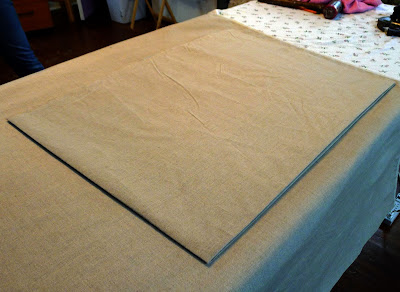 |
| Once I had the fabric true on the warp and weft, I carefully folded it in quarters and set it aside. |
Stretcher bars are designed to float with atmospheric changes, hence the little wooden “keys” that come with them. While having a solid hardwood stretcher makes life a lot easier for the canvas-builder, there is no long-term benefit in locking down the corners by stapling or screwing them together. When it shrinks, a big sheet of loom-state linen is going to pummel its stretchers into compliance.
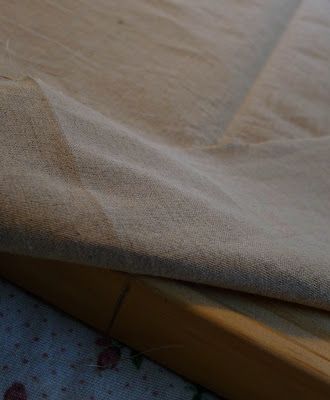 |
| Lining up the creases with the marked midpoints of my stretchers assures me the canvas will be truly square. |
Little canvases sit quietly on a table begging to be stapled. After a certain size, you have to start manhandling them. The easiest way to prevent them from being knocked out of true is to temporarily screw them together at a 45° angle. But that in itself is a lot of work, requiring some woodworking skill, and you should remove the screws when you’re done stapling.
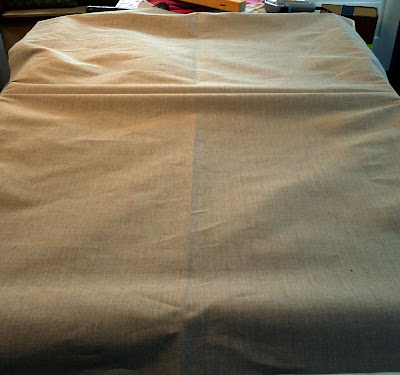 |
| The first staples should be hand-tight, no more. |
Jane (who is a textile designer) suggested I stop thinking of it as a construction problem and start thinking about it as a textile problem. So I applied some of my dimly-remembered 4H sewing knowledge.
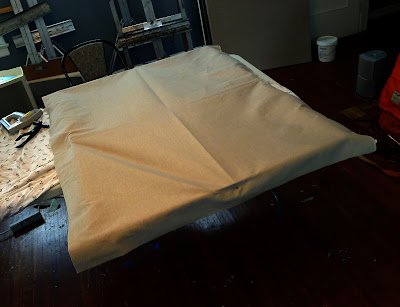 |
| And, yes, you will probably have to remove and replace staples to get the cross straight, but it’s worth it. |
The weft in fabric isn’t necessarily perpendicular to the warp, particularly if it’s from the bottom of a bolt. While you can use the reel to align your horizontal (weft) cuts, you’ve got no guarantee you’re cutting along the grain. The only true straight-edge you have is the selvage edge of the fabric. But using that, you can find any number of true vertical (warp) lines with careful measuring. You can cut down the fabric to the right size along these verticals.
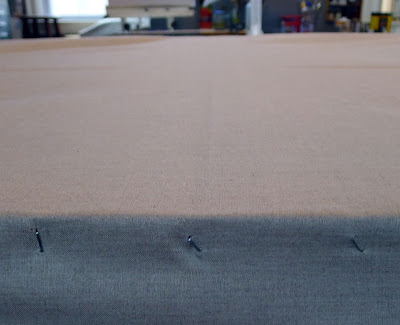 |
| Work around the canvas in a circle, adding a staple to each side until you reach the edges. The linen doesn’t need to be drum-tight,. |
Then enlist a friend to help you fold the fabric in half along the vertical. Grasping each corner firmly, tug it diagonally in alternating directions. Eventually, you will get it more or less squared off. (If you’re doing it right, the ends will probably be cockeyed.)
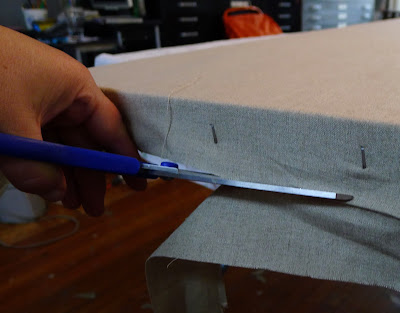 |
| Trim the edges when you finish. (If you want to make gallery-wrap canvases, I can’t help you; I frame everything.) |
Once I was certain I had my fabric with the warp and weft more or less perpendicular, I folded each piece in quarters. Loomstate linen takes a crease beautifully, so the creases became my stapling guide.
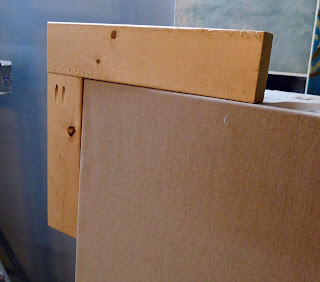 |
| Then check the square again when you’re finished. |
I marked each stretcher bar’s midpoint with pencil. By lining the creases up with these pencil marks, I was sure I was creating a canvas that would pull tightly on the square. The first set of staples, across the midriff of the canvas, should be hand-tight, no tighter. From there I stapled the vertical set. Yes, I had to take staples out at this point and adjust them, but if those four staples yield a straight cross at the right tension, the rest of the canvas must line up true.
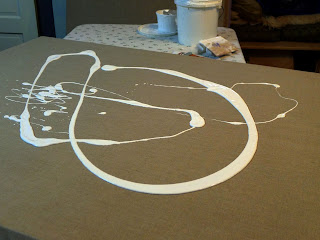 |
| Finally, time to pour a little acrylic gesso on your loomstate linen. (If you want the disquisition about why I don’t use PVA and oil-based gesso, just ask.) |
From here I was back on familiar territory. I used canvas pliers and worked out from the center, adding two staples to each side and then rotating 90 degrees. The goal isn’t to tighten the fabric as far as you can; the goal is to tighten it as evenly as you can. Watch the fabric grain as you go; if it’s out of line, you’ve messed something up.
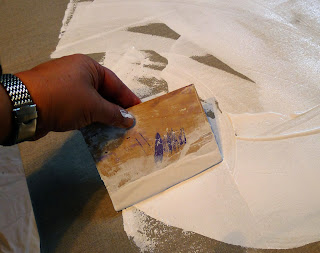 |
| Use your strigil to push the gesso into the grain. At this stage, less is more; it’s easier to add more gesso than to remove a gloppy excess from a canvas. |
I did eight 40X48” canvases with this technique. It was a lot faster than fixing the corners, and the canvases (now finished) look true to me.
|
|
|
And do the edges and clean up any ridges with an old spalter brush and you’re done. Go have a beer; you’ve earned it!
|
Let me know if you’re interested in painting with me in Maine in 2014 or Rochester at any time. Click here for more information on my Maine workshops!
.jpg)




.jpg)






